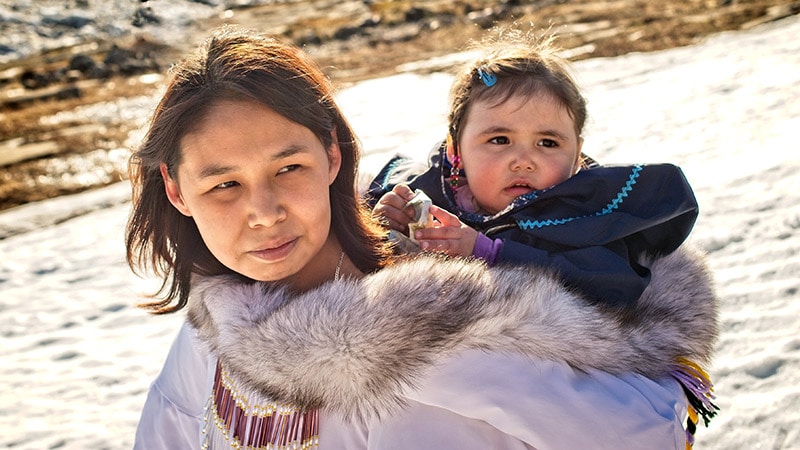Animal-borne infectious diseases in the Arctic, although rare, are becoming more common as the region gains increasing global interest and is transformed by climate change, according to a new review.
In the Canadian Arctic, Indigenous people (including the Inuit, Gwich’in, and Athabaskan communities) may encounter zoonotic infections while caring for the land and consuming traditional foods. Taking the One Health approach that recognizes the interconnectedness of humans, animals, and the environment can help clinicians identify potential exposures and disease transmission when they assess patients.
“The Arctic is opening up, and in a globalized world combined with climate change, physicians working in the Arctic should be aware of such infections. Though most remain rare at present, epidemiologic vigilance is important,” senior author Justin Penner, MD, a pediatric infectious disease physician at the Children’s Hospital of Eastern Ontario in Ottawa, Ontario, and at the Qikiqtani General Hospital in Iqaluit, Nunavut, both in Canada, told Medscape Medical News.
“Clinicians working in the Arctic should also appreciate and inform themselves of Indigenous cultures of the communities they serve to better inform clinical care,” he added. “Indigenous people have been the caretakers of the Arctic for millennia, and their knowledge and connection with the land are indispensable to clinicians.”
The review was published on January 20 in the CMAJ.
Identifying Zoonotic Infections
The investigators outlined exposure avenues, clinical presentations, incubation periods, diagnosis methods, and key questions to ask patients for seven Arctic zoonoses: Trichinellosis, toxoplasmosis, echinococcosis, diphyllobothriasis, brucellosis, seal finger (Mycoplasma phocacerebrale), and rabies (lyssavirus).
Animal-borne infectious diseases in the Arctic region tend to have specific epidemiologies and modes of transmission, which can be helpful during clinical assessments. For instance, Indigenous cultural interaction with animals and the environment can lead to exposure, so a thorough clinical history is fundamental, the authors wrote.
Traditional or “country foods” in Arctic communities can include seals, walrus, birds, and caribou, which may increase exposure risk while hunting, eating, or making art or clothing. In many cases, ingesting cysts, eggs, or larva from undercooked or raw food can lead to exposure.
For several of these diseases, gastrointestinal discomfort is common, though nonspecific or general inflammatory symptoms may appear as well. Incubation periods vary, and diagnosis can take weeks in some cases, so it’s important to ask patients about country food consumption, preparation methods, injuries, animal bites, immunosuppressive medications, and relevant vaccinations.
“Patients from Northern communities transferred to referral centers may be misdiagnosed if treating teams are not familiar with zoonotic infections that occur in these regions,” said Cedric Yansouni, MD, associate professor of infectious diseases and medical microbiology and director of the J.D. MacLean Centre for Tropical & Geographic Medicine at the McGill University Health Centre in Montreal, Quebec, Canada, who wasn’t involved with this paper.
“We have seen patients with undiagnosed trichinellosis be referred to rheumatology for autoimmune myositis and an intubated patient in the intensive care unit with undiagnosed mild botulism treated as a primary aspiration pneumonia,” he said. “In both cases, the final diagnosis and the opportunity to alter the clinical trajectory were delayed by a lack of clinician awareness.”
Ultimately, clinical suspicion is the key to early recognition, particularly because testing may take time, Yansouni said. With trichinellosis, for example, data from Nunavik and Germany indicate that postexposure prophylaxis with mebendazole can prevent clinical disease if given early enough.
In addition, clinicians should consider local customs and appropriate messaging that keeps patients’ culture in mind. Clinicians should avoid overemphasizing risk or omitting the health benefits of traditional food, while taking a pragmatic approach that includes a focus on clean food preparation, vaccination for some animals and humans, and cooking techniques for people who are pregnant or immunocompromised.
“While knowledge of Arctic zoonotic infections is important to clinicians treating individuals, public health recommendations about country food must always be a partnership with community members to be effective,” said Yansouni.
Emphasizing One Health
Just as the scientific concept of One Health recognizes the links between animal and human health, the Inuit Qaujimajatuqangit principle sees the interconnectedness of all things. For clinicians, this idea can help with prevention and management of not only zoonotic infections but also antimicrobial resistance and emerging infectious diseases such as SARS-CoV-2, avian influenza, and mpox.
“Working at the One Health interface, zoonotic infections provide a good example that diseases often don’t respect species boundaries. They’re part of our ecosystem, and it’s important to increase awareness of these rare diagnoses,” said Emily Jenkins, PhD, DVM, head of the Zoonotic Parasite Research Unit at the University of Saskatchewan in Saskatoon, Saskatchewan, Canada, and co-lead of the university’s One Health Signature Area. Jenkins wasn’t involved with this paper.
“The North itself deserves more attention and focus as a hotbed of climate change, where the things we thought we knew are now changing, such as the distribution of hosts and invasive species,” she said. “The top of the world is really connected, and we can’t afford to keep forgetting about that.”
For healthcare clinicians and veterinarians alike, she said, having infectious diseases — including rare zoonotic infections — on a list of differential diagnoses can help. In addition, knowing Indigenous terms and actively listening to patients and families can identify risk factors.
“Take an expanded history and really listen when you’re thinking about these unusual diagnoses, especially when Indigenous terms and knowledge may not be the same as in your medical textbook,” Jenkins said. “Listen to the nurse practitioner, elder, or hunter who has been in that area for their whole life. They have a lot of valuable knowledge to share.”
The review was conducted without external funding. Penner, Yansouni, and Jenkins reported no relevant disclosures.
Carolyn Crist is a health and medical journalist who reports on the latest studies for Medscape Medical News, MDedge, and WebMD.
Source link : https://www.medscape.com/viewarticle/identifying-zoonotic-infections-canadian-arctic-2025a10001mh?src=rss
Author :
Publish date : 2025-01-23 09:05:57
Copyright for syndicated content belongs to the linked Source.
